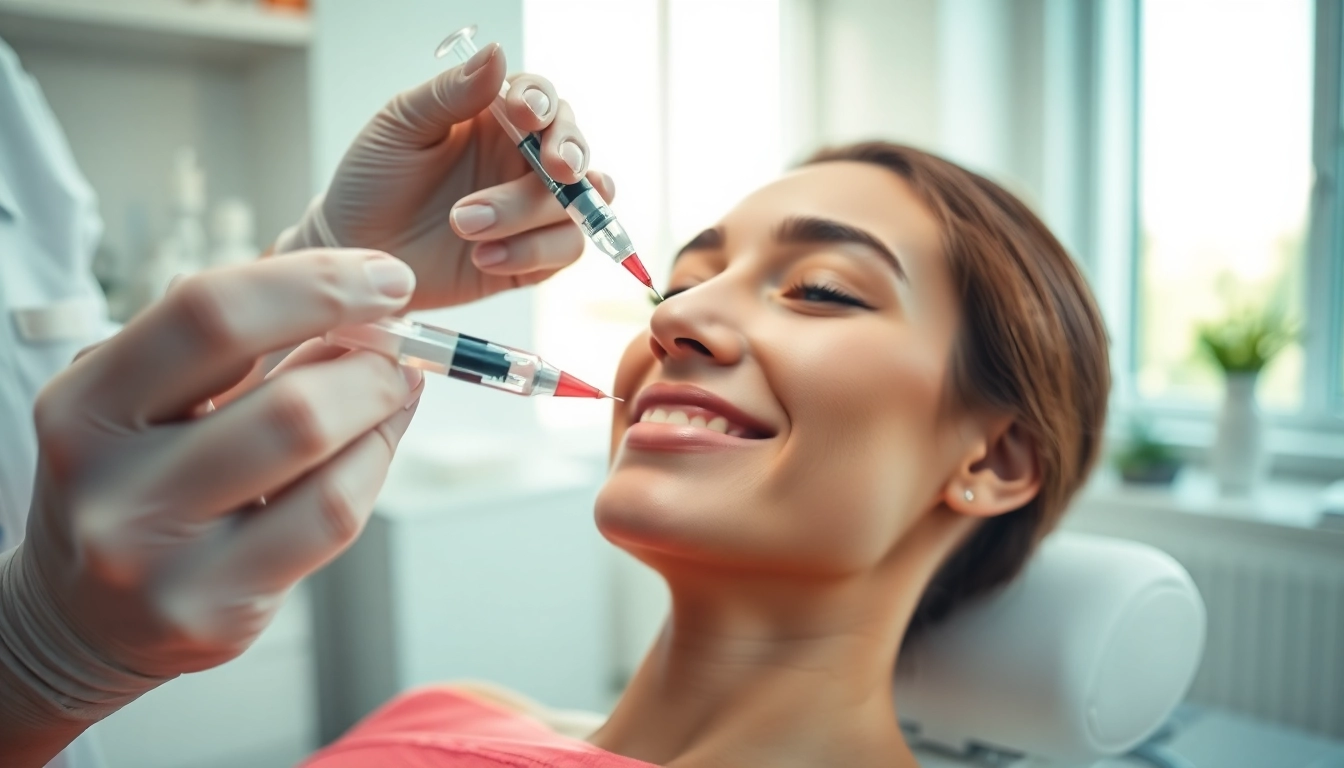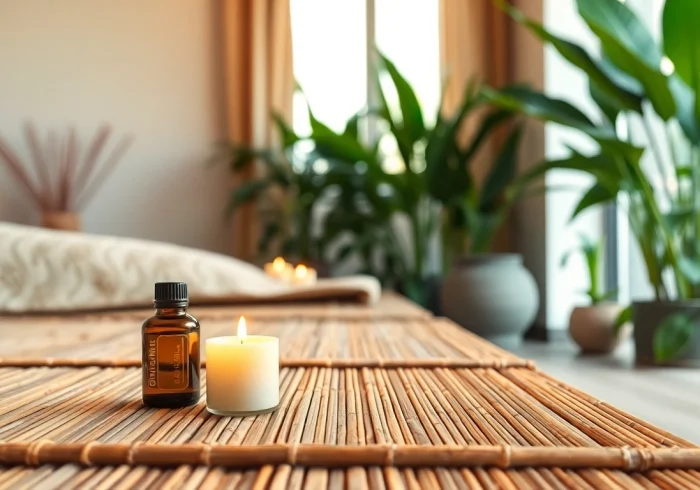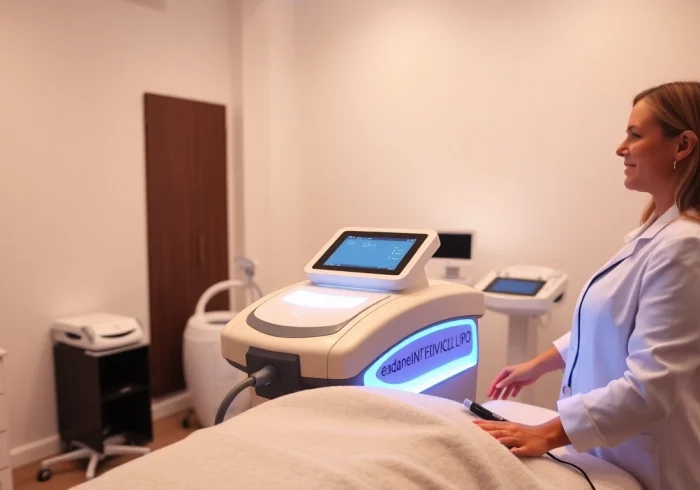Understanding Wrinkle Relaxers
As the desire for youthful skin continues to grow, the popularity of Wrinkle Relaxers has skyrocketed. These non-surgical treatments offer an effective way to reduce the appearance of fine lines and wrinkles, providing a smoother and more youthful look. In this article, we will explore what wrinkle relaxers are, how they work, and the various types available on the market today.
What Are Wrinkle Relaxers?
Wrinkle relaxers, commonly referred to as neuromodulators, are injectable treatments designed to reduce the facial wrinkles caused by repetitive muscle contractions. These include frown lines, crow’s feet, and forehead lines, which develop with age and repeated facial expressions. The most well-known brands include BOTOX, Dysport, Xeomin, and Jeuveau, each with unique formulations and benefits.
The Science Behind Wrinkle Relaxers
Wrinkle relaxers work by blocking the nerve signals that trigger muscle contractions. When injected into specific facial muscles, the active ingredient—often a purified form of botulinum toxin—temporarily paralyzes the muscle, resulting in a smoother complexion. This effect generally lasts three to six months, varying from person to person, depending on factors like metabolism and treatment area.
Common Myths About Wrinkle Relaxers
Despite their popularity, several misconceptions persist:
- Myth 1: Wrinkle relaxers are only for older individuals.
Fact: Many people in their 20s and 30s choose these treatments as a preventive measure against wrinkles. - Myth 2: They will make you look frozen or unnatural.
Fact: When administered by a skilled professional, results can look natural and subtle. - Myth 3: Wrinkle relaxers are unsafe.
Fact: When used correctly, they are considered safe with minimal side effects.
Types of Wrinkle Relaxers
While there are several wrinkle relaxers available, three leading brands dominate the market: BOTOX, Dysport, and Xeomin. Each has its own characteristics and ideal use cases.
BOTOX: The Popular Choice
Introduced in the 1980s, BOTOX was the first FDA-approved wrinkle relaxer. Its active ingredient, botulinum toxin type A, works on the targeted muscles to create a smoother appearance. BOTOX is especially effective for crow’s feet, forehead lines, and frown lines between the eyebrows. Most users experience noticeable results within three to five days.
Dysport: Fast Results Explained
Dysport is another neuromodulator that offers faster results compared to BOTOX. Users often report seeing improvements within 24 to 48 hours. Dysport has a slightly different formulation, which makes it more suitable for larger treatment areas like the forehead. Its diffusion capability allows it to spread effectively, providing a natural look without the “frozen” effect.
Xeomin: The Purity Factor
Xeomin distinguishes itself by being a “naked” form of botulinum toxin, lacking additional proteins found in BOTOX and Dysport. This purity may reduce the likelihood of developing resistance to the treatment. Xeomin is ideal for those who have previously developed antibodies against other neuromodulators. It offers results comparable to its counterparts, with effects lasting approximately three to six months.
Choosing the Right Wrinkle Relaxer for You
Determining which wrinkle relaxer is right for you involves considering various factors. Each product has its advantages and potential drawbacks, and personal preference plays a significant role in making this choice.
Factors to Consider
When selecting a wrinkle relaxer, consider the following:
- Area of Treatment: Different products may be better suited to specific areas, such as around the eyes or across the forehead.
- Desired Longevity: If you’re looking for short-term results for a special event, quick-acting products like Dysport may be preferred.
- Previous Experiences: Past reactions to injectables can guide your choice; for example, if you’ve developed resistance to BOTOX, Xeomin might be a better option.
Consultation Tips
Consulting a qualified practitioner is crucial for achieving optimal outcomes. Here are some tips for your consultation:
- Be honest about your medical history, including any prior cosmetic treatments.
- Discuss your aesthetic goals clearly to ensure the chosen relaxer aligns with your expectations.
- Ask about the practitioner’s experience with different products and observe before-and-after photos of previous patients.
Expected Results and Longevity
Results from wrinkle relaxers can last anywhere from three to six months. After your treatment, you may notice a gradual improvement where fine lines and wrinkles become less visible. It’s important to maintain realistic expectations, as complete wrinkle removal is usually not attainable without additional treatments.
Wrinkle Relaxers: Procedure Overview
The procedure for receiving a wrinkle relaxer is typically quick and straightforward. Understanding the steps involved can help reduce any apprehension you may have.
What to Expect During Treatment
Most customers can expect the following during their treatment:
- The area to be treated will be cleaned, and a topical anesthetic may be applied to minimize discomfort.
- A fine needle will be used to inject the chosen wrinkle relaxer into specific muscles.
- The entire procedure usually takes about 10 to 30 minutes, depending on the number of areas treated.
Aftercare Tips for Optimal Results
Post-treatment care plays a critical role in achieving optimal results. Here are some aftercare tips:
- Remain upright for several hours following treatment to prevent the relaxer from spreading to unintended areas.
- Avoid strenuous exercise and any activities that may cause excessive sweating for at least 24 hours.
- Refrain from rubbing or massaging the treated areas to minimize the risk of diffusion.
Potential Side Effects to Monitor
While side effects from wrinkle relaxers are generally minimal, some patients may experience:
- Temporary bruising or swelling at the injection site
- Headaches, particularly after a first-time treatment
- Mild drooping of eyelids or eyebrows, which typically resolves within a few weeks
Consult your practitioner immediately if you experience severe side effects, such as difficulty swallowing or breathing.
Comparing Costs and Providers of Wrinkle Relaxers
The cost of wrinkle relaxers can vary considerably based on several factors, including the type of product used, the provider’s location, and the practitioner’s experience level.
Pricing Overview
Typically, the cost is calculated per unit, with prices ranging from $10 to $20 per unit, depending on the brand. For example, BOTOX may require 20 to 50 units for effective results in a single area, while Dysport might use up to 60 units. It’s essential to discuss pricing with your provider and understand the complete cost involved in your treatment plan.
Finding Qualified Practitioners
Choosing the right practitioner is crucial for achieving safe and effective results. Look for a licensed physician, dermatologist, or aesthetic nurse practitioner with significant experience in administering injectables. Recommendations from friends or online reviews can also provide valuable insights.
Insurance and Financing Options
In most cases, cosmetic procedures like wrinkle relaxers are not covered by insurance. However, many providers offer financing options or payment plans that can make treatments more accessible. Discuss these options during your consultation to find a payment solution that fits your budget.
Conclusion
Understanding wrinkle relaxers and how they work is the first step towards making an informed decision about your cosmetic journey. With various options available—each with its benefits—consulting with a qualified practitioner can guide you in selecting the product that best matches your needs and goals.



